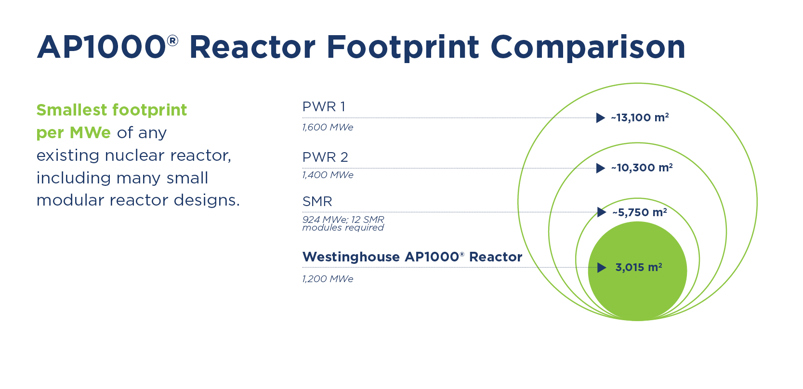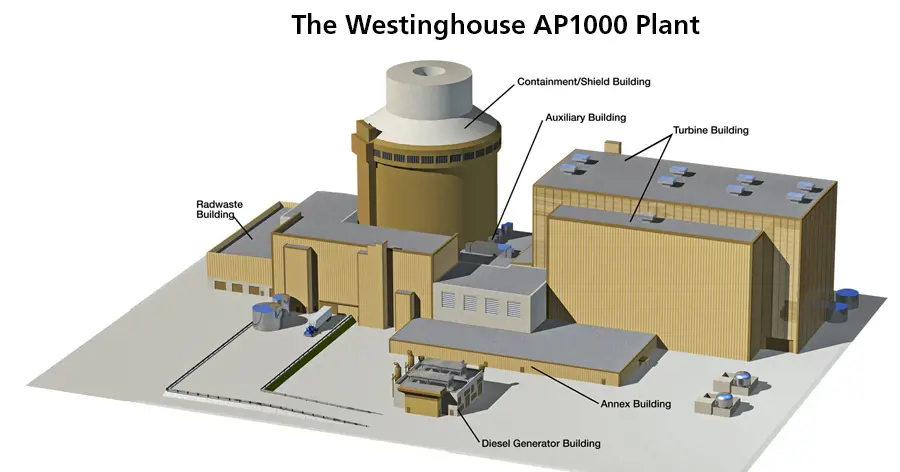The AP1000® pressurized water reactor’s (PWR) extensive use of modularization of plant construction mitigates both of these drivers.
Considered the most advanced commercially available plant, the Westinghouse AP1000 pressurized water reactor yields considerable capital savings and lower maintenance costs delivering safe, efficient, more economical nuclear power solutions across the world.
The AP1000 reactor reduces the amount of safety-grade equipment required by using passive safety systems. Consequently, less Seismic Category I building volume is required to house the safety equipment (approximately 45 percent less than a typical reactor). The AP1000 reactor’s modular construction design further reduces the construction schedule and the construction risks, with work shifted to factories with their better quality and cost control as well as labor costs that are less than those at the construction site.
This also allows more work to be done in parallel. The use of heavy lift cranes enables an “open top” construction approach, which is effective in reducing construction time.

The AP1000 reactor has a smaller footprint than an existing nuclear power plant with the same generating capacity. The reactor arrangement provides separation between safety-related and non-safety-related systems to preclude adverse interaction between safety-related and non-safety-related equipment. Separation between redundant, safety-related equipment trains and systems provides confidence that the safety design functions of the AP1000 PWR can be performed. In general, this separation is achieved by partitioning an area with concrete walls.
The AP1000 reactor is arranged with the following principal building structures, each on its own basemat:
